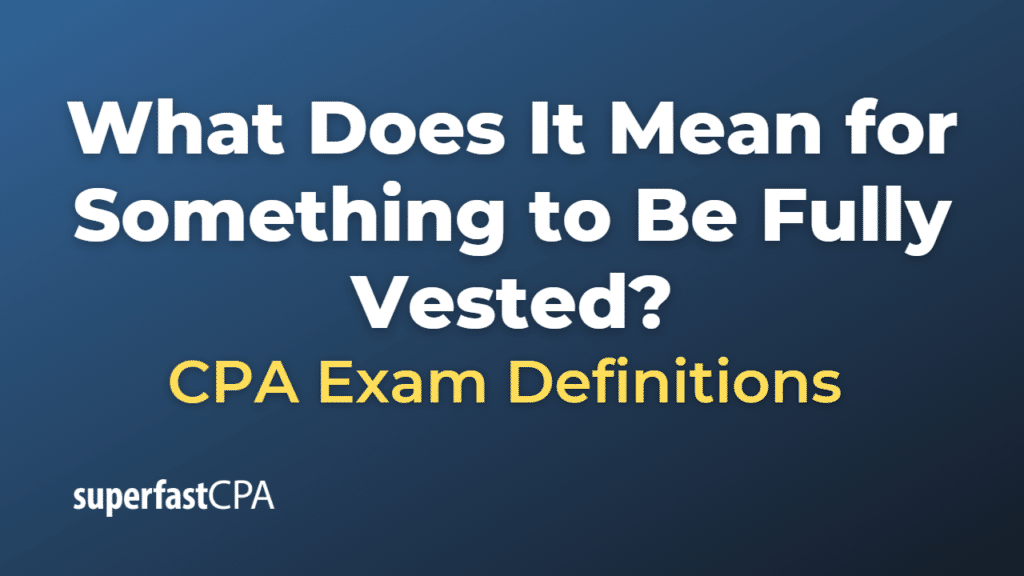Fully Vested
When you are “fully vested” in an investment, it means that you have earned the right to fully own or benefit from it. The term “vested” often comes up in the context of retirement plans or stock options offered by an employer.
Let’s consider a couple of common examples:
- Retirement Plans: In the case of a company’s retirement plan, such as a 401(k) or a pension plan, being fully vested means you have a right to the full amount of money in the account, including both the contributions you have made and any matching contributions your employer has made on your behalf. Companies often have a vesting schedule, which means employees become vested in the employer contributions over a set period of time (for example, 20% each year for five years). Once you’re fully vested, even if you leave the company, you still have a right to the entire balance, including what the company contributed.
- Stock Options: If your employer grants you stock options as part of your compensation, being fully vested means you have the right to exercise your options and buy the company’s stock at the specified price. Similar to retirement plans, stock options often come with a vesting schedule. For instance, you may be granted 1,000 stock options when you’re hired, but you might only become vested in 20% of the options each year for five years.
Being “fully vested” in your benefits is an important milestone, because it means those benefits are now entirely yours, and your employer cannot take them back even if you leave the company. It’s important to understand your company’s vesting schedule and how it impacts your retirement savings or other benefits.
Example of Fully Vested
Consider an example for both scenarios described:
- Retirement Plan: Suppose you are an employee at a company that offers a 401(k) retirement plan and matches your contributions up to 5% of your salary. You contribute 5% of your salary and the company matches that. However, your company has a four-year graded vesting schedule, which means you earn 25% vesting in the company’s matching contributions each year.Here’s what that might look like:
- After one year of service, you are 25% vested in the company’s contributions. This means if you leave the company at this point, you would only be entitled to 25% of the amount your company has contributed to your 401(k).
- After two years of service, you become 50% vested in the company’s contributions.
- After three years of service, you are 75% vested.
- After four years of service, you are 100% (or fully) vested in the company’s contributions. If you leave the company now, you are entitled to all the money you’ve contributed plus all the money your company has contributed on your behalf, including any earnings on those contributions.
- Stock Options: Now suppose you start a new job and as part of your compensation, you’re granted 2,000 stock options with a four-year vesting schedule, vesting 25% per year.
- At the end of the first year, you’re fully vested in 500 options (25% of 2,000), so you can exercise these options, meaning you can buy shares at the option price.
- At the end of the second year, you’re vested in another 500 options, bringing your total to 1,000 vested options.
- After three years, another 500 options vest, for a total of 1,500 vested options.
- At the end of the fourth year, the final 500 options vest. You’re now fully vested in all 2,000 options. You can exercise any or all of these options to buy company shares at the option price, or you can wait to do so in the future.
Remember that vesting schedules can vary greatly between companies and between different types of benefits. The examples above are simplified, and real-world scenarios could be more complex. Always make sure you understand the specific vesting schedule and rules associated with any retirement or stock option plan you participate in.













